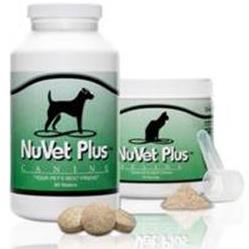- Small Dog Place Home
- Hybrids
Small Breed Designer Dogs
By Janice Jones
What are Designer Dogs? It has become very popular nowadays to breed two purebred dogs together and call the offspring Hybrid Dogs, Diva Pets, Purse Pets, Rare, Exotic, or Special in some way pets.
These crossbreeds are commanding a big price tag and many if not most different breeds are involved. This niche market is thriving and growing.
Check our our complete list of designer dogs that have been produced with small breed dogs.
You have no doubt heard of Yorkie-Poo's, Cock-a-Poo's, Malti-Poo's, Morkies, but have you seen a Cock-a-Shels, Malt-oodles, a Peke-A-Pom, or a Yorki-Huahua?
In fact, you can find these mixes of dogs in about every shape, color, and size.
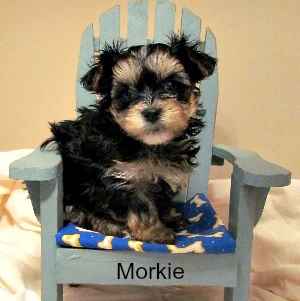 Morkie: A Hybrid between a Yorkshire Terrier and a Maltese Dog
Morkie: A Hybrid between a Yorkshire Terrier and a Maltese DogThey have become so popular that many breeders specialize in one or more breeds and the possibilities of producing these cross-bred dogs are nearly endless.
Check our our list of designer or hybrid dogs produced by small breed dogs.
There are so many different hybrid dogs, that sometimes a picture is worth a thousand words. Before you run out to get one of these special dogs, you should understand the pros and cons of hybrid dogs.
History of Designer Dogs
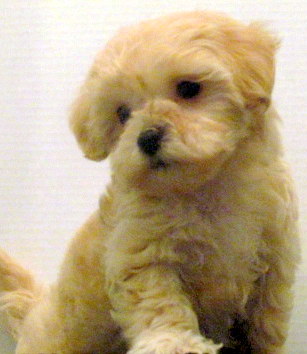 Maltese and Poodle Mix (Malti-Poo)
Maltese and Poodle Mix (Malti-Poo)Depending on your
point of view, the history of these dogs can go back to the point in
time
when humans first began interacting with wolves. Most people consider
the origins to be much more recent.
Before the term "designer" was coined, these dogs would have been called crossbreeds, mixed breeds, or mutts.
Another name that is commonly used to describe these crossbreeds is hybrid, although technically speaking, from a scientific point of view, this is an inaccurate way to use the word.
Some so called designer dogs have occurred without any human intervention. That is to say, that some are the result of unaltered dogs being allowed to roam freely mating at will.
This has happened throughout history and is where we got the names mutt, crossbred, mongrel, Heinz 54 variety dog or simply mixed breed dog.
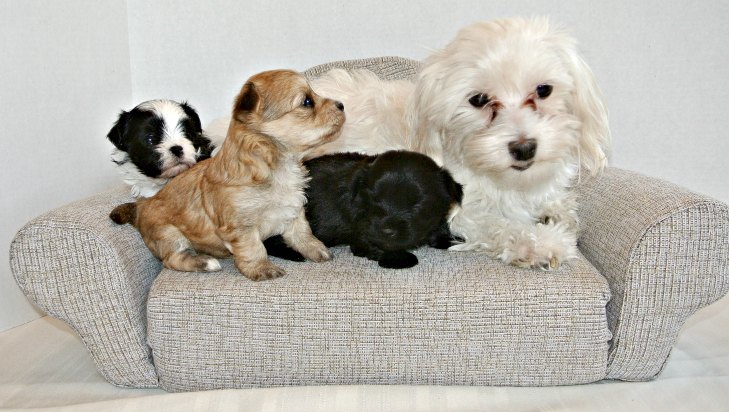 These little ones don't look anything like their Mama, a Maltese because they are Mal-Shi.
These little ones don't look anything like their Mama, a Maltese because they are Mal-Shi.Modern Day Designer Dogs and Human Intervention
With human intervention, the historical time-line becomes much shorter.
The first and probably most popular hybrid to be produced was the Labradoodle, which is a mix between a Labrador and a standard poodle.
In this case, the name first appeared in the 1950s but did not become popular to the late 1980s.
At that time, the whole conception of the labradoodle was to produce a service dog with the wonderful characteristics of the Labrador retriever that was also somewhat hypoallergenic so that the dog could be accessible to people with allergies.
Please note, that there is no such thing as completely hypoallergenic dogs, but some come very close.
Since then people assume that the labradoodle might make the perfect family dog, taking characteristics from the poodle – intelligence and non-shedding, and mixing it with the good traits of the Labrador, playfulness and hard working.
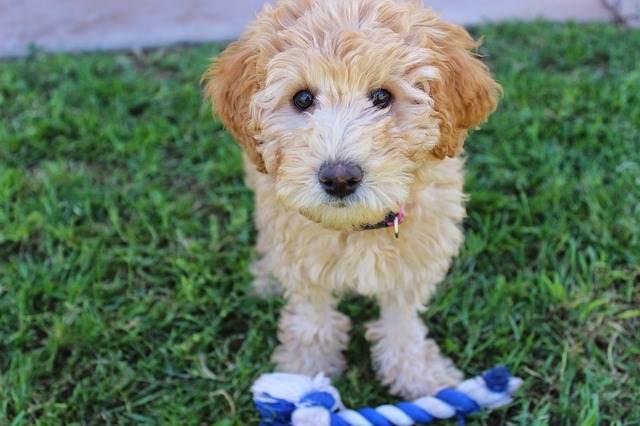 The first and probably most popular hybrid to be produced was the Labradoodle, which is a mix between a Labrador and a standard poodle.
The first and probably most popular hybrid to be produced was the Labradoodle, which is a mix between a Labrador and a standard poodle.From there, the trend just mushroomed using any two purebreds to create a cross breed that could be called a hybrid.
Now these designers are often more expensive than their purebred cousins.
Was the trend the result of greedy breeders, curiosity among breeders, breeders who were truly searching for the perfect dog, or a population of pet lovers who wanted something new, different or unique?
People are intrigued with the so call dog du jour, especially if it has an exotic sounding name.
How Designer Dogs/Hybrids are Produced?
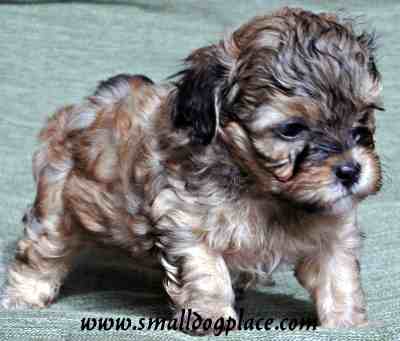 Shorkie Tzu is a Yorkshire Terrier and Shih Tzu mix
Shorkie Tzu is a Yorkshire Terrier and Shih Tzu mixWhen there is a deliberate attempt to create a cross between two breeds, registered purebred dogs are usually used, but not necessarily.
Breeders will start with two purebred registered dogs and pair them creating a new so called breed such as when a Maltese is bred with a poodle creating a Malti-Poo. Another example (pictured above) is the Yorkshire Terrier and the Shih Tzu.
A true designer dog or hybrid has 50% of her genes from one purebred parent and 50% of her genes from the other parent. This would be considered a first generation hybrid and these dogs are more uniform than other types of designer dogs.
But, all breeders do not start with two purebred dogs. Rather, many decide to cross a purebred mother with a hybrid father resulting in offspring that may be passed on as hybrids without the genetic ratios one should expect.
You can get a Malti-poo by breeding a Maltese to a Malti-poo but the offspring will have more Maltese genes than poodle genes. Here, the offspring might be ¾ Maltese and only ¼ poodle.
Breeders who thoughtfully produce hybrid dogs do so with the hope of taking the best from one breed and matching it with the best of another breed to get an entirely new animal that is the best all-round pet.
In fact these dogs are often created for a new look, a healthier dog, a dog with a superior temperament or intellect, or a combination of all characteristics.
When this actually occurs, it is a WIN-WIN situation all around. But anyone familiar with genetics will tell you that there are no guarantees and the offspring can be anything but perfect.
When the breeding is done deliberately, the offspring command the name Designer Dog, and as a result; the puppy produced is perceived as being more valuable, more desirable, and often more expensive.
Whether it is a conscious attempt to breed or an accidental mating, the only way to determine the health and temperament of the new hybrid dog is to look up the characteristics found in the parent breeds and know that any combination is possible.
There is little certainty when it comes to genetics. So, rather than getting the best of both worlds, the offspring produced could end up with the worst characteristics of both parents.
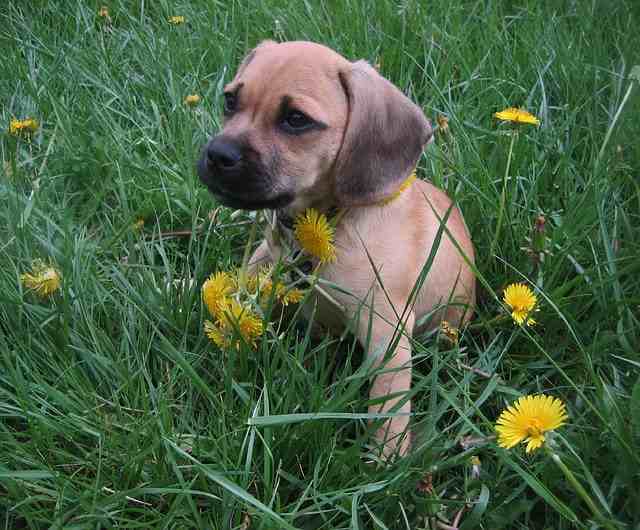 This is a Puggle, a mix between a Beagle and a Pug
This is a Puggle, a mix between a Beagle and a PugDebate of Designer Dogs/Hybrids
The whole notion of the crossbreed brings up much controversy in the dog world about the merits of mixing two purebred dogs.
Most dog fanciers and die-hard purebred breeders shudder at the mere thought of ever producing a dog that does not improve the quality of their chosen breed.
Their mantra has always been that no one should ever consider breeding two dogs unless they hope to improve the breed in some way (conformity, health, or disposition).
They look at their role of a purebred breeder as a fusion of art and science, pushing the limits to produce a purebred dog minus any flaws. They feel that any breeder who does less is somehow inferior.
Others will argue that breeders have been producing cross bred dogs for eons.
All of today's recognized breeds were created through deliberate attempts by humans to mate certain breeds to create offspring with the desirable traits. Those desirable traits being a better hunting dog, a more effective herder, or a superior guard.
For example, today’s lovable Shih Tzu dogs came from a cross between a Pekinese and a Lhasa Apso.
Let’s face it, the breeds of today would all look like ancient wolves if it were not for the selective breeding of ancient people. Who knows, today's hybrid will become tomorrow's recognized breed.
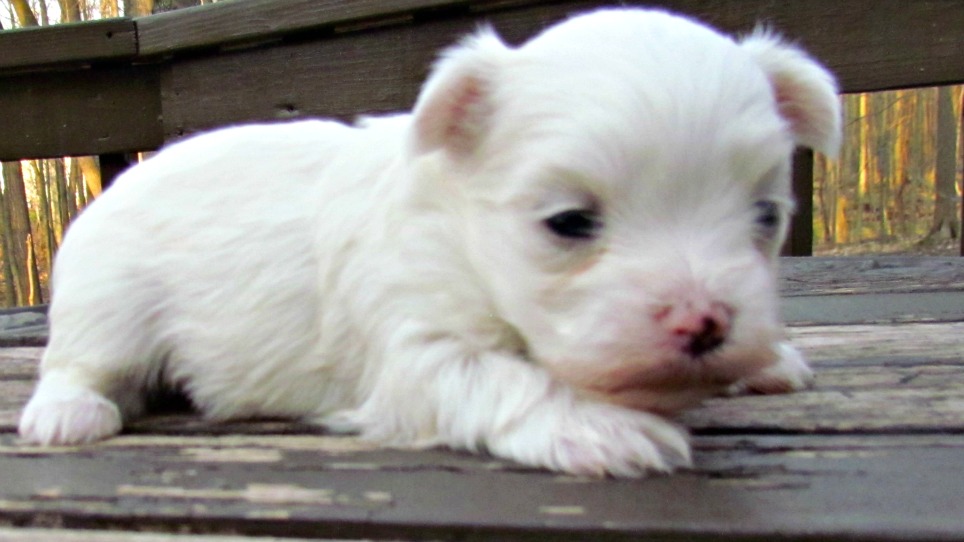 Maltese and Poodle Hybrid
Maltese and Poodle HybridBreeders who choose to go the route of the hybrid do so for many different reasons. Many believe that they are healthier than a purebred dog.
There are some merit and truth claims made by fans of the hybrid. Many purebred dogs have been so interbred over the years that certain hereditary diseases are very common in a specific breed.
When the gene pool becomes more diverse, there is less likelihood that these inherited diseases will show up.
If you mate two different breeds both of which suffer from the same hereditary disease, this argument is no longer valid. In some cases, however, one breed can overcome the problems of another making the offspring healthier.
Consider the Shih Tzu, a brachycephalic breed that is prone to breathing problems.
Cross a Shih Tzu with a Maltese and you get a dog with a longer nose, but one that physically resembles the Shih Tzu. A dog with a longer snout has less problems breathing. This also holds true for the Shih Poo.
Naming Designer Dogs
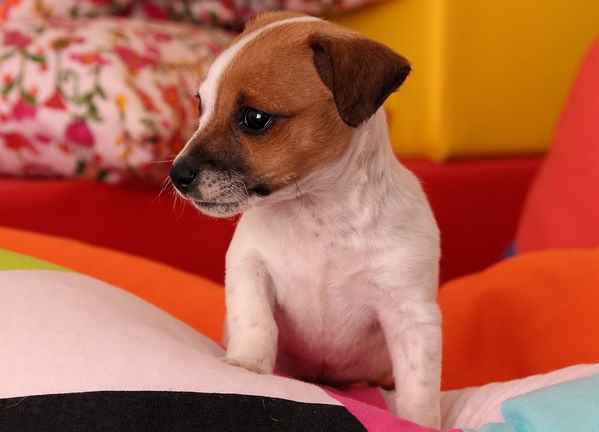 Jack Russel Terrier and Chihuahua Mix
Jack Russel Terrier and Chihuahua MixIt would seem that producing designer dogs is only part of the fun; naming designer dogs is equally appealing and often there is more than one name that describes the same dog.
The Mal-Shi is not a purebred dog. It is a cross between the Maltese and a Shih Tzu.
But depending on who you talk to, the puppy could also be called a Shih-tese, Shihtese, Malti Tzu, or Shima. Five names all describing the same dog!
Some names are easy to figure out. Take the Yorkie Tzu for example.
There's no rocket science involved in determining that this is a mix between a Yorkshire Terrier and a Shih Tzu.
Some are not that obvious. Take the Whoodle for an example. This is a poodle and soft coated wheaten terrier.
What about dogs that just don't seem to have a name? Maybe its up to the owner to name the hybrid.
Take for example, the Australian Terrier and Shih Tzu mix, a wonderful combination.
As of the writing of this article, no one has named this combination and it is not listed on any of the hybrid registries. My advice is to contact the registries and add the name to their lists.
This is Jessie, an Australian Terrier - Shih Tzu Mix
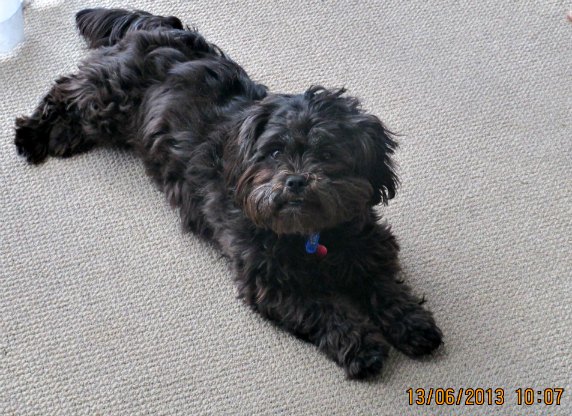 Black Australian Terrier and Shih Tzu Mix
Black Australian Terrier and Shih Tzu MixWhimsical or just plain silly describe some of the names –
- Puglet (pug and rat terrier),
- Dorkie (Dachshund and Yorkshire Terrier)
- Yorkiwawa (Yorkshire Terrier and, Chihuahua)
- Chiweenie (Chihuahua and Dachshund)
It would seem that it you bred the dog, you get to name it. If you bought the dog, you get to name it and if you don’t name it, someone else will.
Some of this craziness originated when people decided that their lovable mutt adopted from a shelter had to have a breed name. More officially, the Canine Designer Dog Registries often decide on the name they will use when the dog is registered.
Registries for Designer Dogs
Since designer or hybrid dogs are not purebred, they cannot be registered by an organization such as the American Kennel Club.
Owners of these designer dogs do have the option to register with
Designer Breed Registry (DBR),
International Designer Canine Registry (IDCR),
Designer Dogs Kennel Club (DDKC) or
The American Canine Hybrid Club (ACHC).
A dog can be registered if the parents are purebred and preferably registered with a recognized dog registry such as the AKC.
Some registries such as the IDCR are beginning to develop “breed” characteristics for the designer dogs they register but as yet, no breed standards exist for these dogs as they do for purebred dogs.
There are now many different hybrid dog varieties and these numbers appear to be growing.
With a world society enamored by the exotic, ever demanding unique and different products, it makes sense that they would want these unusual characteristics in their beloved pets.
Dog breeders respond to their customer’s wishes by producing yet another designer combination.
What Our Readers Say About Their Dogs
Zsa Zsa, My Designer Mongrel by Kaye (Napier - New Zealand)
"My darling Zsa Zsa is affectionately known as a 'designer mongrel', and I love her.
I picked her out when she was 5 weeks old and, decidedly, the runt of the litter.
I believe she is now coming up 14 or around 76 in human years and has always had the most wonderful nature.
She is very loving and has slept with us since my husband put her on our bed when she was 3 months old. She kept crying during the night in her sheepskin basket, where I also kept a tick-tock clock so as to sound like a heartbeat from her mother.
She was often sick in the early months with tonsillitis and, so at eight months old, our Vet removed her tonsils.
She graduated from Puppy School with a degree and has always been brave around large dogs since she got acquainted at her weekly classes.
When she was 18 months old, we relocated to the Gold Coast, Australia, with our cat, Precious.
The day we picked them up from Brisbane Airport Quarantine little Zsa Zsa got bitten by a Bull Ant when I walked her in the park across the road from our apartment.
She had to put a packet of frozen peas on her pad to reduce the swelling. She and Precious had to get used to the humidity, as we did. Whenever we had to leave them at home, we left the air conditioning on to keep them cool.
There were no water bowls outside because of the cane toads. We walked every day with Zsa Zsa at around 5 a.m. to avoid the heat.
She did some miles. Three years later, we came back to NZ with them both, and they settled again well.
Life wouldn't be the same without Zsa Zsa. She is such an important part of our family and is thoroughly spoiled by us and my mother, who lives with us.
It's sad to see her getting older, but I hope and pray we have her in our lives for a few more years.
She is the child I never had......"
About Janice (author and voice behind this site)
Having lived with dogs and cats most of her life, Janice served as a veterinary technician for ten years in Maryland and twelve years as a Shih Tzu dog breeder in Ohio.
Her education includes undergraduate degrees in Psychology with a minor in biology, Early Childhood Education, and Nursing, and a master's in Mental Health Counseling.
She is a lifelong learner, a dog lover, and passionate about the welfare of animals. Her favorite breed for over 50 years has been the Shih Tzu, but she has also lived with Poodles, Maltese, Yorkshire Terriers, Beagles, English Bulldogs, Carin Terriers, and a Cocker Spaniel.
When not writing, reading, and researching dog-related topics, she likes to spend time with her eight Shih Tzu dogs, husband, and family, as well as knitting and crocheting. She is also the voice behind Miracle Shih Tzu and Smart-Knit-Crocheting
Does This Article Deserve Your Thumbs Up?
We always appreciate your support and encouragement. Your thumbs up means so much to us. Please like this article.
If you find this page or any page on Small Dog Place Helpful, or useful in anyway, I'd love it if you would click the small heart found on the bottom right of each page.
You can also share or bookmark this page -- just click on the:
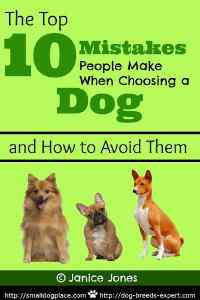
Free Monthly Newsletter
Sign Up for Our Free Newsletter and get our Free Gift to You.
my E-book, The Top 10 Mistakes People Make When Choosing a Dog (and how to avoid them)
